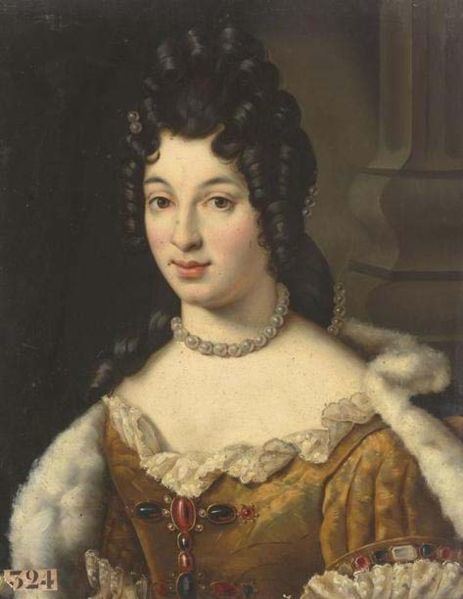Name Adelaide Susa | ||
 | ||
Children Bertha of Savoy, Amadeus II, Count of Savoy, Peter I, Count of Savoy, Adelheid of Savoy Parents Bertha of Milan, Ulric Manfred II of Turin Similar People Henry IV - Holy Roman E, Rudolf of Rheinfelden, Agnes of Germany, Agnes of Poitou, Henry V - Holy Roman E | ||
Adelaide of Turin (also Adelheid, Adelais, or Adeline; c. 1014/1020 – 19 December 1091) was the Countess of part of the March of Ivrea and the Marchioness of Turin in Northwestern Italy from 1034 to her death. She was the last of the Arduinici and is often incorrectly associated with Susa. She is frequently compared to her close contemporary Matilda of Tuscany.
Contents
- Early life
- Marriages
- Widowhood and rule
- Relationship with empire
- Relationship with the Church
- Death
- Family and children
- Legacy
- References
Early life
Born in Turin to Ulric Manfred II and Bertha around 1014/1020, Adelaide's early life is not well known. Adelaide had two younger sisters, Immilla and Bertha. She may also have had a brother, whose name is not known, who predeceased her father. Thus, on Ulric Manfred's death (in December 1033 or 1034), Adelaide inherited the bulk of her father's property. She received property in the counties of Turin (especially in the Susa Valley), Auriate, and Asti. Adelaide also inherited property, but probably not comital authority, in the counties of Albenga, Alba, Bredulo and Ventimiglia. It is likely that Adelaide's mother, Bertha, briefly acted as regent for Adelaide after Ulric Manfred's death.
Marriages
Since the margravial title primarily had a military purpose at the time, it was thus was not considered suitable for a woman. Emperor Conrad II therefore arranged a marriage between Adelaide and his stepson, Herman IV, in 1036 or 1037. Herman was then invested as margrave of Turin. Herman died of the plague while fighting for Conrad II at Naples in July 1038.
Adelaide remarried in order to secure her vast possessions. Probably in 1041, and certainly before 19th January 1042, Adelaide married Henry, Marquess of Montferrat. Henry died c.1045 and left Adelaide a widow for the second time. Immediately, a third marriage was undertaken, this time to Otto of Savoy (1046). With Otto she had three sons, Peter I, Amadeus II, and Otto. The couple also had two daughters, Bertha, who married Henry IV of Germany, and Adelaide, who married Rudolf of Rheinfelden (who later opposed Henry as King of Germany).
Widowhood and rule
After the death of her husband Otto, c.1057/60, Adelaide ruled the march of Turin and the county of Savoy alongside her sons, Peter and Amadeus.
It is sometimes said that Adelaide abandoned Turin as a capital and began to reside permanently at Susa. This is incorrect. Adelaide is documented far more frequently at the margravial palace in Turin than anywhere else.
In 1070 Adelaide captured and burned the city of Asti, which had rebelled against her.
Relationship with empire
In 1069 Henry IV tried to repudiate Adelaide's daughter, Bertha, which caused Adelaide's relationship with the imperial family to cool. However, through the intervention of Bertha, Henry received Adelaide's support when he came to Italy to submit to Pope Gregory VII and Matilda of Tuscany at Canossa. In return for allowing him to travel through her lands, Henry gave Bugey to Adelaide. Adelaide and her son Amadeus then accompanied Henry IV and Bertha to Canossa, where Adelaide acted as a mediator, alongside Matilda and Albert Azzo II, Margrave of Milan, among others. Bishop Benzo of Alba sent several letters to Adelaide between 1080 and 1082, encouraging her to support Henry IV in the Italian wars which formed part of the Investiture Controversy. Adelaide's dealings with Henry IV became closer after this. She offered to mediate between him and Matilda of Tuscany, and may even have joined him on campaign in southern Italy in 1084.
Relationship with the Church
Adelaide made many donations to monasteries in the march of Turin. In 1064 she founded the monastery of Santa Maria at Pinerolo.
Adelaide received letters from many of the leading churchmen of the day, including Pope Alexander II, Peter Damian, and Pope Gregory VII. These letters indicate that Adelaide sometimes supported Gregorian reform, but that at other times she did not. Peter Damian (writing in 1064) and Gregory VII (writing in 1073), relied upon Adelaide to enforce clerical celibacy and protect the monasteries of Fruttuaria and San Michele della Chiusa. By contrast, Alexander II (writing c.1066/7) reproached Adelaide for her dealings with Guido da Velate the simoniac Archbishop of Milan.
Death
Adelaide died in December 1091. According to a later legend, she was buried in the parochial church of Canischio (Canisculum), a small village on the Cuorgnè in the Valle dell'Orco, where she had supposedly been living incognito for twenty-two years before her death. The medieval historian Charles William Previté-Orton called this story "absurd". In the cathedral of Susa, in a niche in the wall, there is a statue of walnut wood, beneath a bronze veneer, representing Adelaide, genuflecting in prayer. Above it can be read the inscription: Questa è Adelaide, cui l'istessa Roma Cole, e primo d'Ausonia onor la noma.
Family and children
Because of a late Austrian source, Adelaide and Herman IV, Duke of Swabia are sometimes mistakenly said to have had children together. This was not the case. Herman was on campaign for much of his short marriage to Adelaide and he died without heirs. Nor did Adelaide have children with her second husband, Henry.
Adelaide and Otto of Savoy had five children:
Legacy
Adelaide is a featured figure on Judy Chicago's installation piece The Dinner Party, being represented as one of the 999 names on the Heritage Floor.
